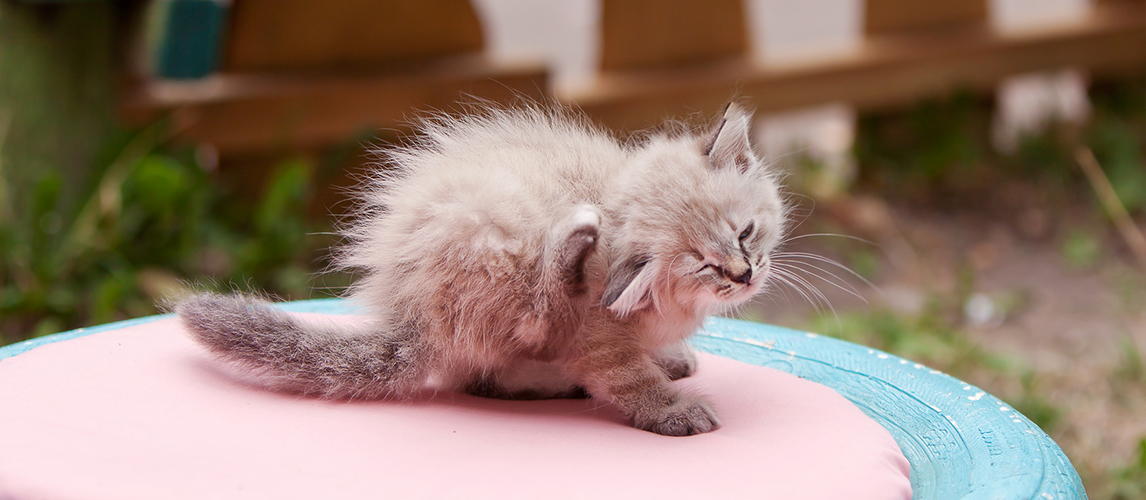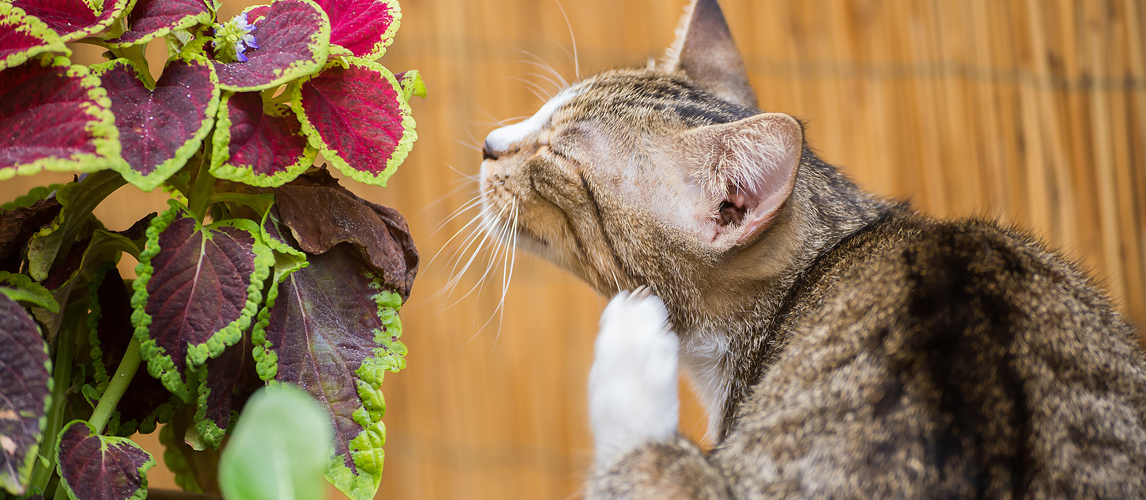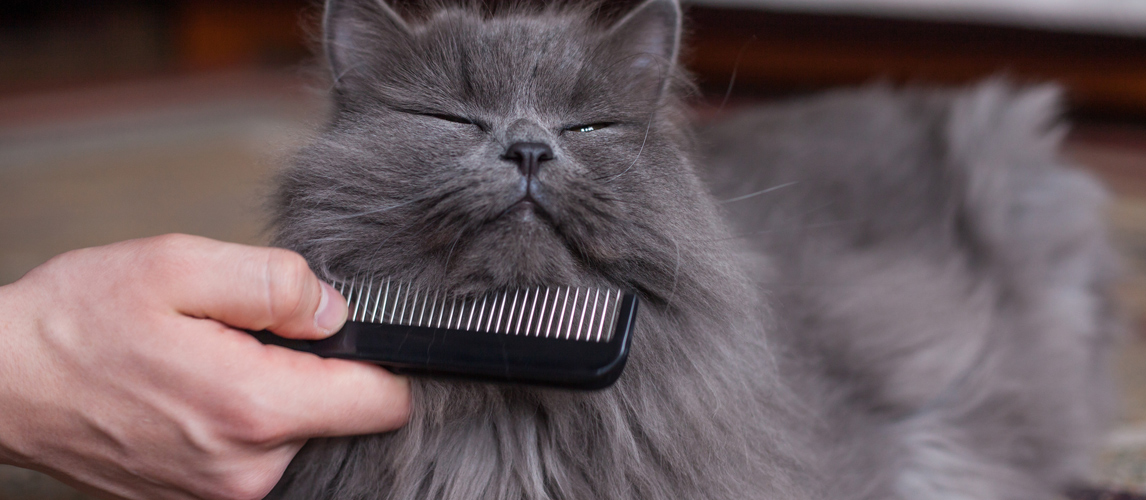Fleas are a nightmare, as any pet owner will tell you, so it seems wise to do everything you can to keep your cat flea-free. You may think it is enough to keep your cat indoors and away from other pets, but, unfortunately, fleas are very persistent creatures and your indoor cat could still get fleas. In the quest to keep your cat free from fleas, information is key, so here we’ve tried to outline all the ways your cat could catch fleas.
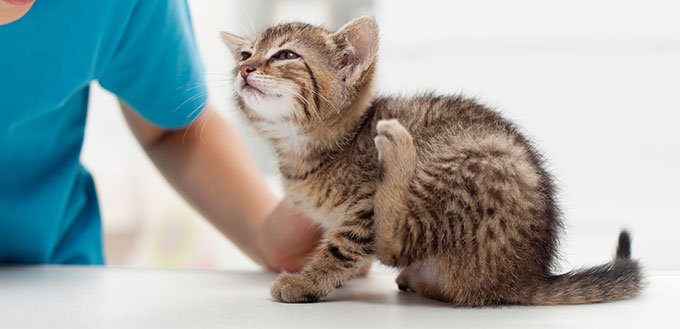
Some Facts About Fleas
If you didn’t already know, fleas are an external parasite that survive off the blood of your pets. In this way, they are similar to lice and mosquitoes. As they are wingless and often set up their home in your pet’s fur, they can be considered more similar to lice than mosquitoes. Some more facts about fleas include:
- Fleas have been on the earth for around 165 million years.
- They are arachnids whose females can produce up to 20 eggs a day.
- Although they can’t fly, they can jump as much as a foot in length, traveling at speeds that are 20 times faster than a space shutting.
- If humans could jump like fleas, we would be able to jump 160 feet into the air and 295 feet in front of us.
- Your cat’s fleas will not jump to humans, though there are species of fleas that can be contracted by humans and cat’s fleas can still pose a risk to you and your family.
Fleas are not, themselves, the problem, but there are a number of problems that fleas cause, and not all of them are just problems for your cat. Here are the key reasons that fleas pose a serious risk to your cat and your family:
An allergic reaction
You probably know that fleas can cause your cat to feel very itchy, but did you know that this itchiness is an allergic reaction? Even more interestingly, it is not an allergic reaction to the fleas themselves, but to their saliva. When a flea bites an animal, it can cause flea bite dermatitis as their body reacts to the saliva as a foreign invader. It makes the area of the bite very itchy, and your cat will feel a lot of irritation and scratch themselves a lot.
Infection
The worst aspect of the allergic reaction is the potential secondary impact of your cat’s irritation and scratching. Many cats that are left to deal with their own fleas will scratch until they break the skin, creating the opportunity for bacteria to cause infections. As you probably know, infections that are left untreated can be fatal. Both the infection and the fleas will then need to be treated by a veterinarian.
Tapeworms
Another issue related to fleas is that your cat is fairly likely to accidentally ingest a flea or two if the infestation is allowed to become particularly bad. Fleas can, unfortunately, carry tapeworms, which are then transferred to your pet. If you don’t know what tapeworms are, they are another form of parasite that works internally and will eat your cat’s food. It causes an itchy rear end and weight loss as your cat is no longer receiving all the nutrients they need.
Anemia
Perhaps the most potentially fatal effect of fleas is anemia. This should only become a risk if fleas are left untreated long enough to create quite an extreme infestation. A huge population of fleas feeding on one cat can reduce their red blood cell count, restricting the flow of oxygen around the body. This is known as anemia and could kill your cat through a form of suffocation..
Biting humans
If you need another reason to treat fleas promptly and work to prevent them ever taking hold, you should know that flea infestations can infect the whole home. While fleas won’t live on your skin and hair, coming into contact with a flea can lead them to bite you and, as they can carry diseases, this risks your health and the health of your loved ones.
Related Post: Best Flea Comb for Cats and Best Flea Shampoo for Cats
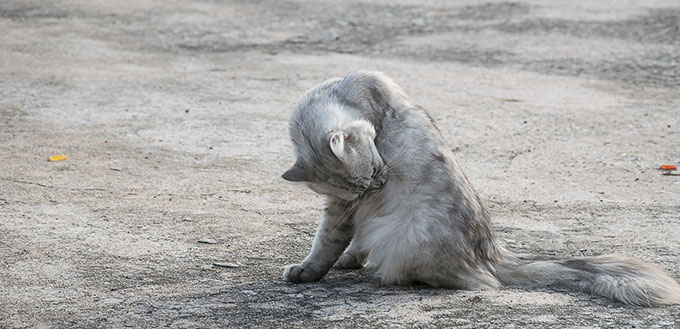
Symptoms of Fleas
If you are concerned that your cat is suffering from fleas, you should check their behavior against this list of symptoms:
- Restlessness
- Scratching, particularly at the ears
- Chewing on the body
- Shaking their head often
- Excessive licking
You should also look out for the actual fleas on both your cat or your soft furnishings. They are dark brown and 1 to 2 mm in length. You can also look for flea’s waste when you comb your cat. The waste looks like black spots, but should turn red on damp tissue paper.
Catching Fleas
So, fleas are obviously awful, but how does your cat actually catch fleas? It is important to understand this if you want to prevent having to deal with an infestation. All cats can catch fleas, but outdoor cats are most at risk. Here are the most common ways that cats catch these parasites:
- Being outside
Fleas can live quite happily outside during the summer. They primarily live on other animals, but can also temporarily exist on soft furnishings that they jump into from these animals. From here, they will jump onto your pet as their first opportunity to be fed, and will breed, producing as many as 50 eggs a day.
- Making friends
Whether it is a play date, meeting a stray, a week in a cat hotel while you go on holiday, or another form of contact with another animal, fleas will easily jump from one cat to another and infect them. The cat does not have to look wild, feral or infected for them to be carrying a couple of fleas that make the jump. A couple of fleas is all it takes to start an infestation.
- From the eggs of previous infestations
If your cat has suffered from fleas in the past, perhaps multiple times, you may be wondering how on earth your cat has got them yet again. The answer may be that you got rid of the infestation, but not all the eggs. Eggs often fall out into your carpet and soft furnishings, where they survive due to the warmth of your home and hatch, re-infesting your cat.
Although your cat is most likely to catch fleas in summer because fleas thrive in warmth, don’t make the mistake of thinking you can just wait for winter to kill off the fleas. Their eggs can last for a while during cold snaps and fleas themselves can survive happily throughout winter in your nice, warm home.
Related Posts: Best Flea Collar for Cats and Best Flea Treatments For Cats
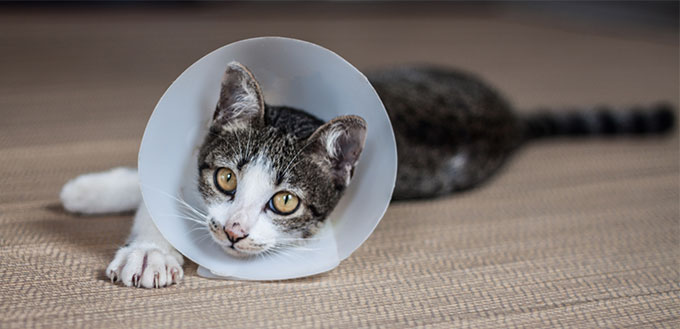
Indoor Cats and Fleas
You may also be assuming that only outdoor cats can get fleas, but this is untrue. While you can reduce the risk of infection by keeping your cat indoors, there are still opportunities for fleas to infest your home and infect your cat. These specific circumstances include:
- Another pet bringing in fleas
Cat fleas and eggs can hitch a ride on your dogs to come indoors and infect your cat. Sharing a home with dogs increases your indoor cat’s chances of suffering from fleas. You must conduct regular checks and look into using preventative cat flea medicine on all your pets if you have a busy, animal-friendly household.
- Big pests bringing in little pests
Rat infestations can bring flea infestations in with them, which can affect your cat. Luckily, this particularly unsavory route to infection is unlikely because cats tend to scare away rats and mice. But if you are struggling with a severe rat infestation, do consider the impact on your cat, and, as always, do your best to discourage such infestations.
- A family member or guest bringing in fleas
Your cat may not move inside and outside the home, but you certainly do. You and your clothes can act as vehicles for fleas and their eggs into your home and, as we’ve already discussed, once inside, they can multiply very quickly to infect your cat. To prevent this happening, you should stay on top of vacuuming all soft furnishings and wash your sheets and clothing promptly, particularly in summer.
- Moving home
As we’ve already discussed, flea infestations can sit dormant for a long time, even through colder weather. A new home could hide a potential infestation in the carpets, and other soft furnishings, for months, waiting for your cat to move in. In apartments and other close-living situations, even your new neighbors could infect your cat. It is worthwhile to hire professional cleaning services before you move in and consider administering some preventative flea treatments.
- Trips outside the home
Your cat can’t avoid going outside forever. Even the most indoor cat will need to visit a vet, go on play dates, and will either come with you on holiday or need to go to a cat hotel. During these times, they are vulnerable to catching fleas from other animals and environments. This is why flea preventatives are so important, and you should discuss prescriptions with your veterinarian.
Sources:
- Tracy V. Wilson, How Fleas Work, HowStuffWorks
- Fleas: A Source of Torment for your Cat, Cornell University College of Veterinary Medicine
- Fleas And Flea Control In Cats, International Cat Care



